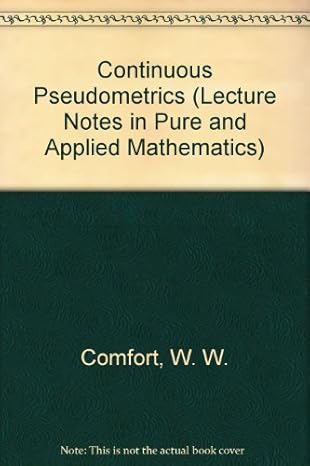Question
In the text we investigated a smaller version of the US Electoral College, where the only states are NY, PA, NJ, and DE, with weights
In the text we investigated a smaller version of the US Electoral College, where the only states are NY, PA, NJ, and DE, with weights 29, 20, 14, and 3, respectively. For each state this equals the combined number of Senators and Congressional representatives. One criticism of the Electoral College is that if the weights were based on population alone, they should equal just the number of Congressional representatives, namely 27, 18, 12, and 1. The argument is that by adding in the 2 Senators to each weight, the current system is biased in favor of small states like DE, by tripling its weight from 1 to 3, while a large state like NY receives a much smaller proportional increase, from 27 to 29.
- According to Banzhaf, what percentage of the actual power does DE have in [36: 29, 20, 14, 3] (based on the actual Electoral College)?
- According to Banzhaf, what percentage of the actual power does DE have in [32: 27, 18, 12, 1] (based on the proposed alteration of the Electoral College)?
- Since in [32: 27, 18, 12, 1] the weights are (roughly) proportional to the state populations, what share of total population does DE have? [Remark: We'll have much more to say about this in the next chapter.]
- Which version of the Electoral College appears to be fairer, based on your analysis in parts a, b, and c above? [You are being asked an interpretive question here, but you should give some numbers to justify your answer.]
Step by Step Solution
There are 3 Steps involved in it
Step: 1

Get Instant Access to Expert-Tailored Solutions
See step-by-step solutions with expert insights and AI powered tools for academic success
Step: 2

Step: 3

Ace Your Homework with AI
Get the answers you need in no time with our AI-driven, step-by-step assistance
Get Started


